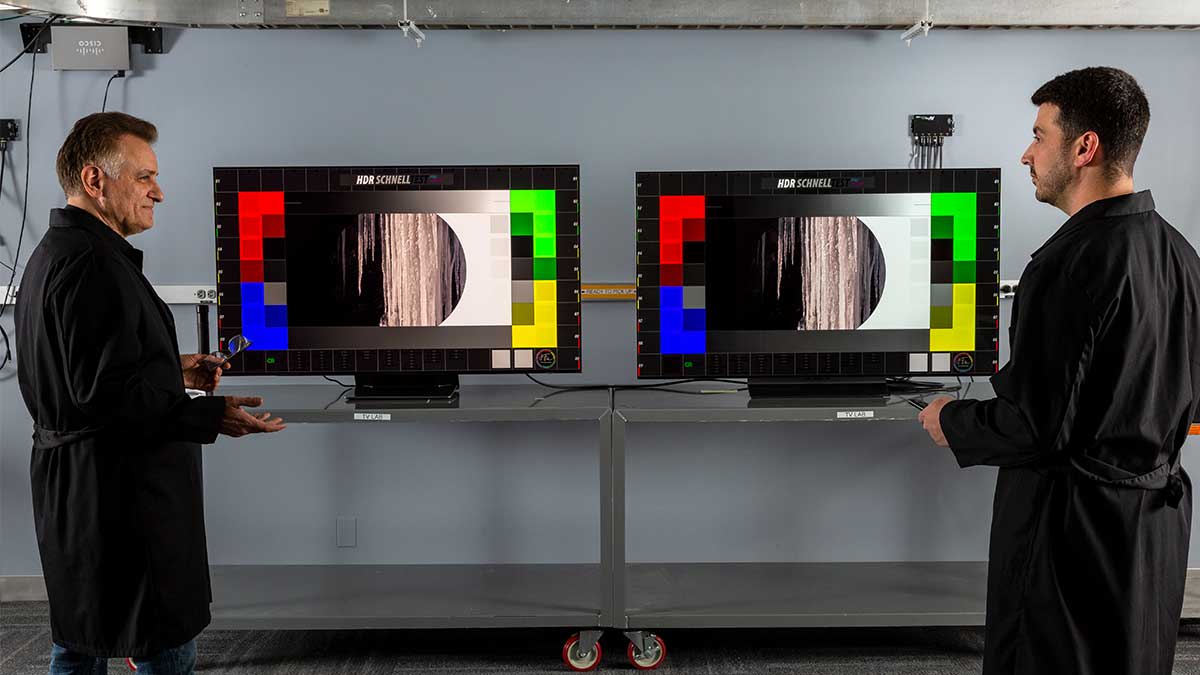
LG OLED vs. Samsung QD-OLED: Which Has the Best TV Tech?
Before we get into a more detailed discussion of our evaluation, we need to explain a little about OLED TV technology in general, and how the sets from Samsung and LG differ from each other.
OLED, short for organic light-emitting diode, is what’s called an emissive technology, meaning that each individual pixel gives off its own light. Because each individual pixel goes from bright to fully off, OLED TVs can produce true deep black tones.
In contrast, most TVs are LCD sets, and these require a separate LED backlight behind the screen. That backlight is always on, so an LCD set needs to selectively block that light in certain areas of the screen in dark scenes—but some light always leaks into adjacent areas of the screen. That’s why on LCD TVs even the inkiest shadows often look more gray than jet black. (This can be addressed with a feature called local dimming, but on sets that have it you may see “blooming,” or bright halos around light objects on dark backgrounds. This is less prevalent on some newer LCD sets that use Mini LEDs and a very large number of local dimming zones.)
Up until this year, all OLED TVs used a technology called WOLED. This approach uses a white OLED light source—it combines blue and yellow OLED material to produce a white light—plus color filters to produce the red, green, and blue colors of the spectrum. Because color filters absorb some of that brightness, these sets add a white sub-pixel that bypasses the color filter to add extra brightness. The downside is that at the highest brightness levels required for HDR content, that extra white sub-pixel can sometimes make colors look a bit washed out.
QD-OLED TVs, which are being offered by Samsung and Sony this year, take a different approach by using quantum dots—nano-sized crystals—in place of color filters. Much like the QLED LCD TVs we see from several companies, including Samsung, QD-OLED sets use a blue OLED light source, with quantum dot material producing red and green light. (The size and composition of the quantum dots determine the colors they emit when hit with a blue light.) Because these TVs don’t use color filters in front of the light source, QD-OLED TVs have the potential to reach higher peak brightness levels without losing any contrast. Additionally, the quantum dots help retain the vibrancy of the picture’s colors at higher brightness levels.
